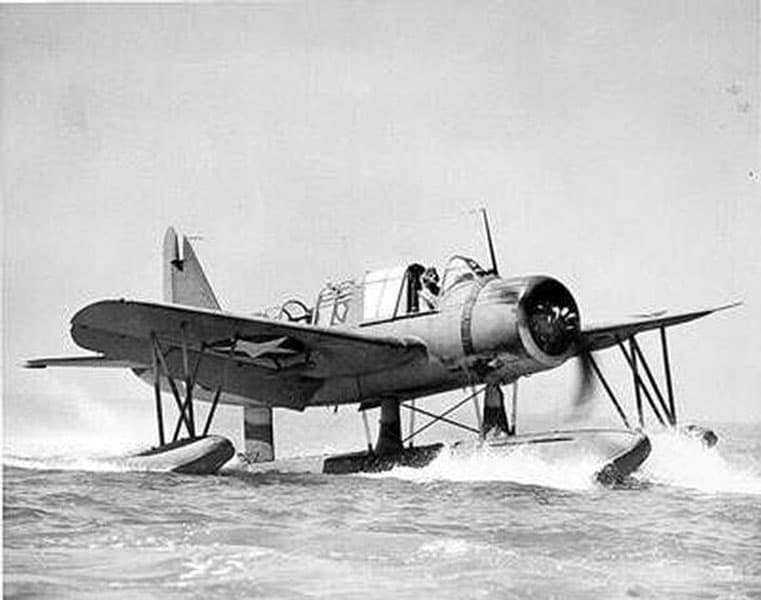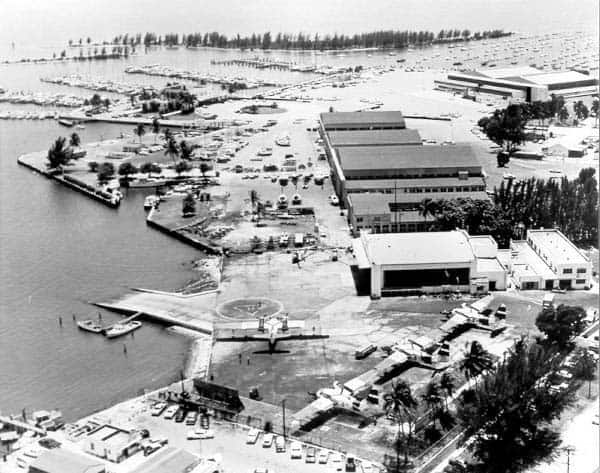Dinner Key was originally an island in Biscayne Bay which was connected to the mainland with fill in 1914. In 1917 the Navy chose this site to become a Naval Air Station. The base was commissioned the following year and conducted flight training with 12 seaplanes and a dirigible. The Navy vacated the base after the end of WWI but the seaplane facilities were utilized by commercial operators. The New York, Rio and Buenos Aires Airline began operations from Dinner Key in 1929. This airline merged with Pan American which initiated an extensive route structure from Dinner Key during the 1930s. Pan Am completed an elaborate passenger terminal building in 1934.

The Coast Guard commissioned an air station at Dinner Key in 1932. This was the first of a series of air stations strategically located in coastal areas to provide search and rescue services as the primary function. The first of the PJ Flying Life Boats were assigned. These aircraft were radio equipped and had radio direction equipment. They could land and take off in the open sea and did so, when the situation dictated, on numerous occasions. It was from Dinner Key that LT Olsen flew in the darkness and storm to evacuate a critically ill crewman from the USA Transport Republic. Wind direction for his take-off was indicated by the ship’s searchlight and the Arcturus lifted out of the sea in total darkness completing a seven hour mission and saving a life.
In 1935 a Labor Day Hurricane with winds of over 150 miles an hour struck the Florida Keys. Lt. Clemmer flew over the Keys prior to the storm reaching them and dropped more than 100 message blocks warning people of the approaching storm. After storm passage all available station aircraft deployed to the ravaged area and commenced an evacuation of those hurt badly. During one flight LT Clemmer took off with sixteen victims on board, the largest number of people ever carried in a FLB, and flew them to Miami for medical attention. Both LT Clemmer and LT Olsen continued the operation for several days. Miami was assisted by aircraft from the newly established air station at Saint Petersburg. The operation was well conducted and provided considerable public awareness of the Coast Guard mission. The operation also illustrated the potential and capabilities of aircraft in this type situation.
A considerable increase in Coast Guard Air stations would take place over the next two years. Additional aircraft were being purchased but a temporary aircraft supplement was required at Miami. Two confiscated New Standard NT-2s obtained from US Customs and two former Navy O2Us were based out of a hangar at the 36th Street Airport which was rented from the city. By 1938 the air station had three PH-2 Hall boats and three SOC-4 seagulls on board and the number of SAR related missions had increased significantly.
With the outbreak of World War II, the Coast Guard aviators at Dinner Key flew anti-submarine warfare patrols and convoy support missions. Attacks were made on enemy submarines but no kills were recorded. They did however save many survivors from torpedoed merchant ships by directing surface vessels to the location and landing in the open sea when situations dictated that a landing should be made. LT James Schrader, while patrolling in a Vought OS2U-3 Kingfisher sighted the remains of the torpedoed tanker Gulfstream and observed three groups of survivors. He landed in the water and took the three men in the first group on board. He then taxied to the second group and gave them a life-raft for support and carried on to the third group; one of which was badly burned. Taking this man on board the already overloaded aircraft he radioed for other Coast Guard aircraft to assist and stood by until help arrived. All survivors were then transported to shore. The Navy also had a VP squadron based out of Dinner Key during the war.

In addition to OS2U aircraft there were PBYs and PBMs and JRFs operated out of Dinner Key. The latter three continued to operate from Dinner Key until after the arrival of the UF-1Gs (HU-16) and helicopters in the 1950s. The Search and rescue operation continued to grow. With operations such as the Cuban Boat lift and other added Coast Guard responsibilities it became obvious that Dinner Key was not large enough to support the required aviation activities. In 1965 the air station at Dinner Key was closed and Coast Guard Air Station Miami operations were moved to Opa-Locka, Florida
Note: See 1965 – Miami Air Station Moved from Dinner Key to Opa Locka for operations after 1965.
